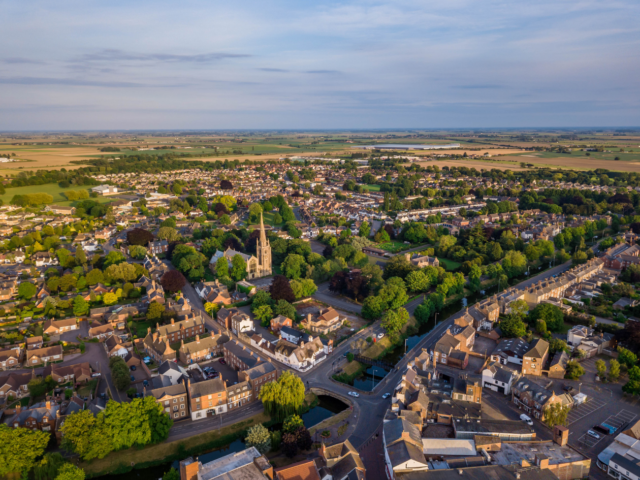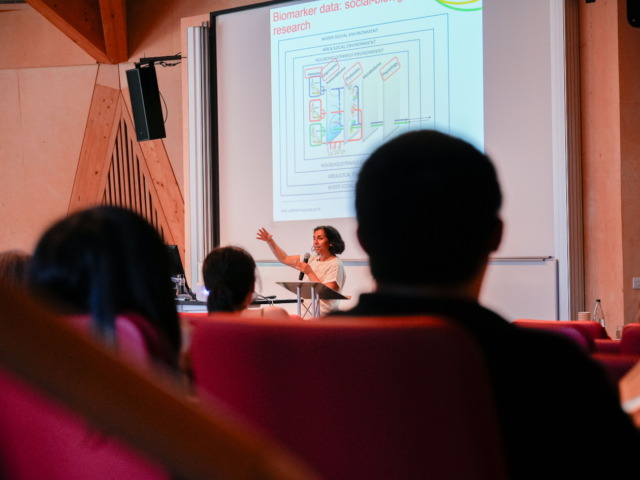There are over 400,000 heritage sites in England, including listed buildings, castles, parks and gardens – and evidence suggests that visiting them is linked to improvements in life satisfaction, greater mental health functioning, and reduced mental distress. But they also give us opportunities for social integration and community engagement, and heritage-based cultural activities have been found to relate to social connectedness and positive emotions.
We wanted to look, in particular, at the benefits of heritage for social capital – the networks, connections, attachments and trust which bind us together in communities. Social capital has been important politically for some years, especially recently as part of ‘levelling up’. So, our research asked:
- are heritage sites linked to social capital?
- is the link connected to how often people visit heritage sites?
- does the link vary by neighbourhood deprivation?
Using the data
This study combined three different datasets to look at these questions. We linked Waves 5 and 6 of Understanding Society with data from the National Heritage List for England (NHLE – the official register of historic buildings and sites) and the Index of Multiple Deprivation (IMD). This allowed us to look at the level of deprivation in an area, its historic built environment, and a number of aspects of social capital, using responses from Understanding Society covering:
- personal relationships – measured by number of close friends, and whether people regularly stop and talk to people in their neighbourhood
- social network support – whether people support any sick, elderly or disabled people, and whether they feel they can borrow things from neighbours
- civic engagement – membership of local organisations and volunteering
- trust and cooperation – how much people trust and are willing to help their neighbours, and how much sense they have of belonging to the neighbourhood.
When analysing the data, we also factored in variables such as age, gender, ethnicity, education, employment and income.
Our findings
Overall, about 3 in 10 participants hadn’t visited a heritage site in the previous year, but one in ten had been at least once a month. The average age of people in our sample was 48 – and this was slightly higher in areas where there were a lot of historic buildings.
Heritage and social capital
Our results show that people living in places with more historic built environment had more personal relationships, social network support, and civic engagement, regardless of how often they visited heritage sites. However, if they lived in a more rural area, the effect of heritage on these aspects of social capital was smaller. This may be because the more rural setting is itself already contributing to social capital, with green space encouraging more outdoor social activities.
People living in areas with greater levels of historic built environment showed higher levels of trust and cooperation – and this was true irrespective of how rural the area is, and other factors such as demographics and socioeconomic position. We suspect this is down to these sites being aesthetically pleasing, feeling safe, giving people opportunities to engage with others, and creating a sense of attachment to their neighbourhood.
Social capital, frequency of visits, and deprivation
We also considered whether links between social capital and historic built environment varied by levels of engagement with heritage sites, or deprivation.
We found that the differences in personal relationships between people with higher and lower heritage engagement may be reduced in areas with greater historic built environment. In particular, among those who did not visit heritage sites, personal relationships increased as the number of historic sites in their area increased.
Looking at the relationship between historic sites, deprivation, and trust and cooperation, the historic built environment may have a positive effect on the social outcome in more deprived areas but a negative effect in less deprived areas.
There could be a number of reasons for these findings. For example, heritage sites bring in tourists, whose numbers may make building social capital more difficult for people who live in the area, or make the place feel less special to them. Also, some may see more of the benefits of tourism, such as income, than others, and some may feel the costs (such as reduced access to heritage sites) more – and this may be divisive for the community.
However, for people who never or rarely visit heritage sites, or live in more deprived areas, the historic built environment may help them to be more satisfied with their neighbourhood, or to feel more safe there, and to take part in more outdoor community activities. The aesthetics of the heritage site may also be good for their wellbeing, making it easier to communicate with neighbours.
Policy implications
Our findings have potential policy implications for the ‘levelling up’ agenda. The government could make use of existing heritage sites and infrastructures to support the development of trust and cooperation among people living in more deprived areas, who often have fewer cultural opportunities. For example, projects such as heritage conservation or education projects could teach people new skills, and long-term heritage-led regeneration projects could improve deprived areas. Work could also be done to build sustainability in areas of high tourism.
For people living in areas with fewer heritage sites, it is crucial to make sure they have equal access to historic assets – for example, through local trips, reduced entrance fees, or promoting family and group visits for infrequent visitors. Local communities and councils could also share knowledge on the historic background and character of the area to strengthen neighbourhood connections and trust through a shared sense of history and roots. For example, London Underground has been celebrating its heritage in recent years in order to interest the public in the tube’s history. Activities such as these can lead to improvements in wellbeing for individuals and whole communities.
Read the original paper by Karen, Daisy Fancourt, and Eirini Gallou
Authors

Karen Mak
Karen is a Research Fellow in Quantitative Social Science in Behavioural Science and Health at UCL




